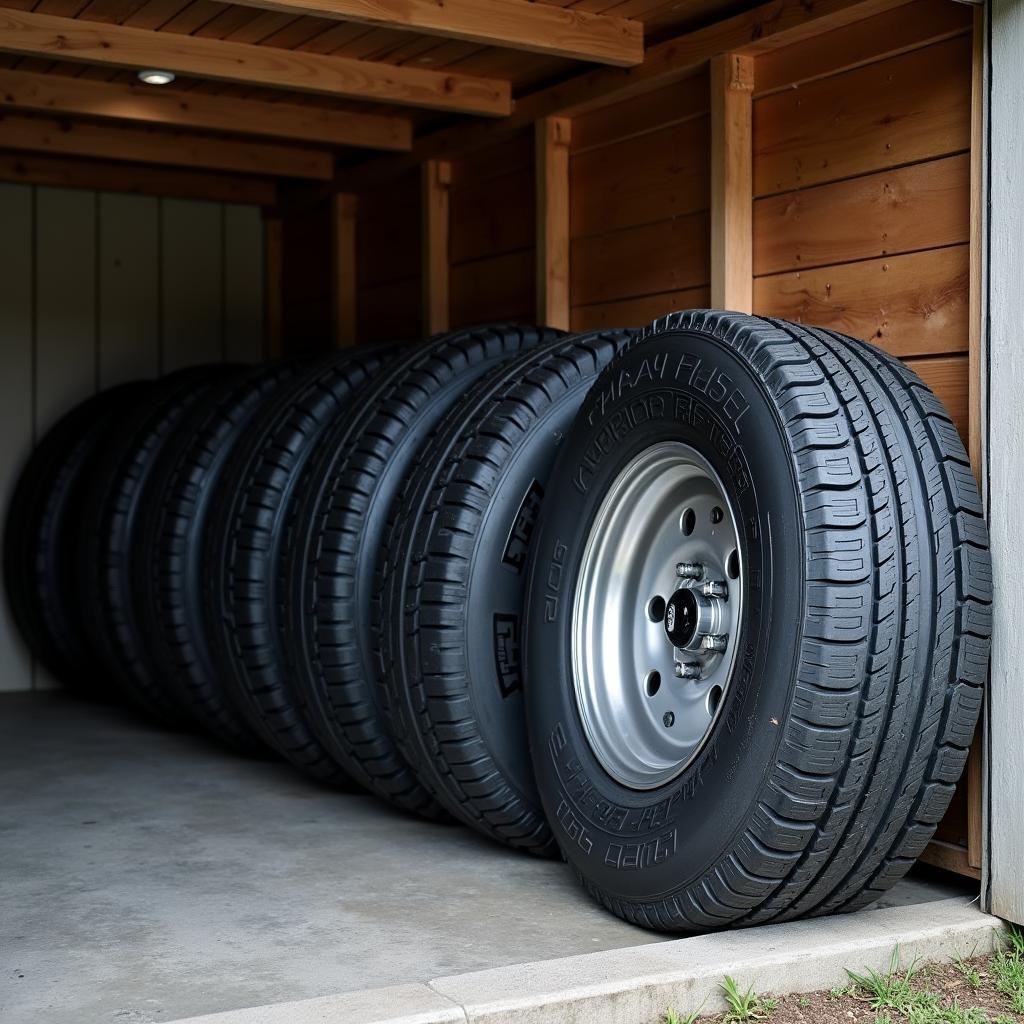Changing to winter tires is a recurring topic for drivers every fall. But when is the right time? What are the benefits of winter tires? And what is the correct procedure for changing them? In this article, you will learn everything important about winter tire changes, so you can navigate the cold season safely and comfortably.
Why Winter Tires Are So Important
Winter tires are not only legally required in many regions under certain conditions, but they also offer crucial advantages in cold weather, snow, and ice. The difference lies in the material and the tread pattern. Winter tires are made of a special rubber compound that remains flexible even at low temperatures, providing better grip. The deeper tread pattern with numerous sipes offers additional traction on snow and slush.
“Winter tires are like shoes for your car. In winter, you need winter shoes to be safe on the road,” says Dr. Hans Müller, an expert in vehicle technology, in his book “Safe Through the Winter.”
The Right Time for a Winter Tire Change
The rule of thumb “from O to O” (from October to Easter) provides good guidance in German-speaking regions. However, experts advise changing tires as soon as temperatures consistently drop below 7 degrees Celsius (45 degrees Fahrenheit). At these temperatures, summer tires lose grip, and the braking distance increases.
Winter Tire Change: DIY or Workshop?
Many car owners wonder if they can change their winter tires themselves. With the right tools and some DIY skills, it is quite possible. However, you should pay attention to the torque specifications and have the wheels checked after the change. If you are unsure, it is better to leave the change to a workshop.
Which Winter Tires Are the Right Ones?
The selection of winter tires is vast. When buying, pay attention to the correct tire size for your vehicle and the marking with the snowflake symbol (Alpine symbol). This symbol guarantees that the tire meets the requirements for winter conditions. In addition, you can refer to tire tests conducted by various automobile clubs and trade magazines.
Tire Pressure Monitoring in Winter
Correct tire pressure is also important in winter. Check the tire pressure regularly, preferably every two weeks. The recommended tire pressure for your vehicle can be found in the owner’s manual or on a sticker in the fuel filler flap or on the B-pillar.
Storing Summer Tires
After changing to winter tires, you should store your summer tires correctly. Clean the tires thoroughly and store them in a dry, dark, and cool place. It is best to use special tire bags or racks.
 Properly storing summer tires helps maintain their condition and lifespan
Properly storing summer tires helps maintain their condition and lifespan
Winter Tire Regulations
Winter tire regulations vary by country and region. It’s important to be aware of the specific laws in your area regarding winter tire use during winter conditions. Typically, these regulations are triggered by the presence of snow, ice, or slush on roadways. Driving with summer tires under such conditions can result in fines and legal repercussions.
Frequently Asked Questions About Winter Tire Change
- When should I change to winter tires?
- What are the advantages of winter tires?
- Can I change winter tires myself?
- What should I look for when buying winter tires?
- How do I store my summer tires correctly?
Related Topics on autorepairaid.com
- Tire Pressure Monitoring System (TPMS)
- Car Battery in Winter
- Winter Check for Your Car
Need Help with Winter Tire Change?
Contact us at autorepairaid.com! Our auto repair experts are available 24/7 and will be happy to assist you.
Conclusion: Safe Through the Winter with the Right Tires
Changing to winter tires is an important step to get through the cold season safely and comfortably. Follow the tips in this article and make sure your vehicle is optimally prepared for winter road conditions. Do you have questions or need support? Do not hesitate to contact us. We look forward to helping you!

